 I have worked with small business owners for a very long time. As a marketing agency, OCG Creative is approached every day by owners and managers looking for help meeting their growth objectives. Most often, they have something in mind. They’ll ask about building a website, utilizing social media, running print ads, or implementing more sophisticated tools like marketing automation, CRM or ERP. All of these tools are incredibly powerful, but must be focused on specific business goals. The purpose of this article is to provide tools to help you assess opportunities and better understand your competitive environment. Ultimately, the goal is to carve out a bigger share of your market—to help you to think and act like a much larger company.
I have worked with small business owners for a very long time. As a marketing agency, OCG Creative is approached every day by owners and managers looking for help meeting their growth objectives. Most often, they have something in mind. They’ll ask about building a website, utilizing social media, running print ads, or implementing more sophisticated tools like marketing automation, CRM or ERP. All of these tools are incredibly powerful, but must be focused on specific business goals. The purpose of this article is to provide tools to help you assess opportunities and better understand your competitive environment. Ultimately, the goal is to carve out a bigger share of your market—to help you to think and act like a much larger company.
The definition of “big” will vary depending on your perspective. For this purpose, we’ll define big based on market position, resources, perspective and operating practices. “Big” usually means market leaders in an industry or region. They not only dominate their market, but have ample resources to stay on top. The executive team is nimble and focused on growth strategies and market influences as much as daily operations. Management might be a team of two or twenty-two, so long as those criteria are met. In fact, all the requisite traits can be present in a single individual. Regardless of actual size, “big” companies have the brains and resources to continue to attract the most customers.
Smaller companies tend to share common characteristics. Almost always, the business was started by a passionate founder with mad skills and a sincere desire to be in the business he or she is in. Generally, that same individual works inside the business, performing all the duties required for daily operations. Focus is task oriented, and tactics are more about survival than growth and profits. There are many “lifestyle” business owners that wouldn’t have it any other way. But, for others, the “lifestyle” can evolve into a daily grind, which is not fun at all. It is possible to transform these kinds of companies. It begins with a shift in perspective.
Business leaders understand their first responsibility is to provide value to the company’s shareholders. Public or private, shareholders expect a profit from their investment in resources. If you own a small business, “shareholders” means YOU. Notice I said “resources” rather than invested capital? Resources certainly includes capital, but your greatest business resource is you. It is essential that you invest that resource wisely so that there is a handsome payoff for your primary shareholder. Treat your time like any other investment. Expect a profit, and invest differently if you aren’t seeing it.
Any business or industry worth being in has competitors. It is natural to view competition in terms of “us versus them” yet what really matters is market size, growth and relative market share. Here are a few terms big businesses use to asses their competitive landscape. TAM: TAM stands for total available market. This represents the total demand for your product or service. The TAM is usually a very large segment. Imagine a product like canned peas and all the producers and consumers that have an interest or need for them. It’s a lot. TAM is useful for assessing service businesses as well. The important thing is to understand the industry you are in and where it’s headed. SAM: This is the serviceable available market. This is the subset of the TAM that is within reach of your business. Trade organizations, business journals, the government and even your local university can help you determine or assess the SAM for your particular business segment. SOM: Sometimes termed, “where we play,” this is the serviceable obtainable market. It is the subset of the SAM your company is equipped to pursue. Once you understand the unbiased scope of your market, you can asses your position in it. For most, this requires a shift in strategic thinking. Knowing the numbers, how big your market is, and what it’s made up of will provide clues about your best moves, given your available resources.
It is often said that 90% of marketing dollars are wasted. There are hundreds of reasons, but one common theme underlying failed marketing efforts is that they focus on the business rather than the consumer. It might sound harsh, but no one cares that you’re the number 1 dry cleaner for over 60 years. Dry cleaning customers care that their shirts are clean and starched just the way they like. They care that they don’t have to park a block away. They care that your kids play soccer together. Marketing must be about the consumer. Your message needs address their desire to make their lives better through your product or service. How you deliver that message depends on the business you are in. Social media might be a huge influencer, or not at all. Same for radio commercials, PPC, etc. Before investing in marketing, be certain a given channel will reach your intended market, and get the messaging right.
It’s time to formulate a plan, so grab your pencil and make two columns on a sheet of paper. Label the first, “What I know.” Label the other, “What I need to know.” Start with the TAM, SAM and SOM. Chances are you’ll need to do some research. If so, unanswered questions go in the “need to know” column. Do the same for anything you can think of that is important to your business. In particular, list the things your customers care about like where they hang out, demographics, etc. Include what you know and don’t know about your competitors also. Eventually, you’ll want make multiple lists that are specific to each aspect of your business. Commonly, these will include customer segments, competitors and market forces. Chances are, you’ll discover dozens of things you “need to know.” The next step is to do the research to find answers. That process alone will shed light on potential strategic moves that will make you a stronger competitor. Longer term, the information you gather here can be used to form the basis of a reliable blueprint for growth. The important thing is to get started.
 Who is Ross Simmonds?
Who is Ross Simmonds?When selecting an internet marketer to be the subject of this weekly blog, we look for somebody who is making an impact in the IM industry. Ross is the perfect example of somebody who has become an IM and B2B thought leader. Ross is a B2B specialist with expertise is content marketing, social media, and storytelling. He has a passion for, in his own words, "technology, the future, good people, good coffee, and storytelling". Along with this he is an experienced entrepreneur. Ross owns a variety of businesses and brands that aim to help his fellow marketers, strategists, and entrepreneurs.
Ross is accomplished in many facets of the business world. To start, he's a B2B and content marketing expert. Ross has worked with businesses ranging from startups to Fortune 500 brands to increase their brand awareness and ROI. As Ross puts it. "You can't add fans & followers to the balance sheet. That's a reality. But for many agencies & B2B professionals, that's where the goalpost are and it's exactly why many struggle to see ROI." Ross uses his knowledge of the marketing process to help brands reach their ROI goals using content marketing. Along with his hands on work with brands, Ross wrote Stand Out: The Content Guide for Entrepreneurs. This book is Ross's ultimate guide to understanding the 'Why' behind content marketing.
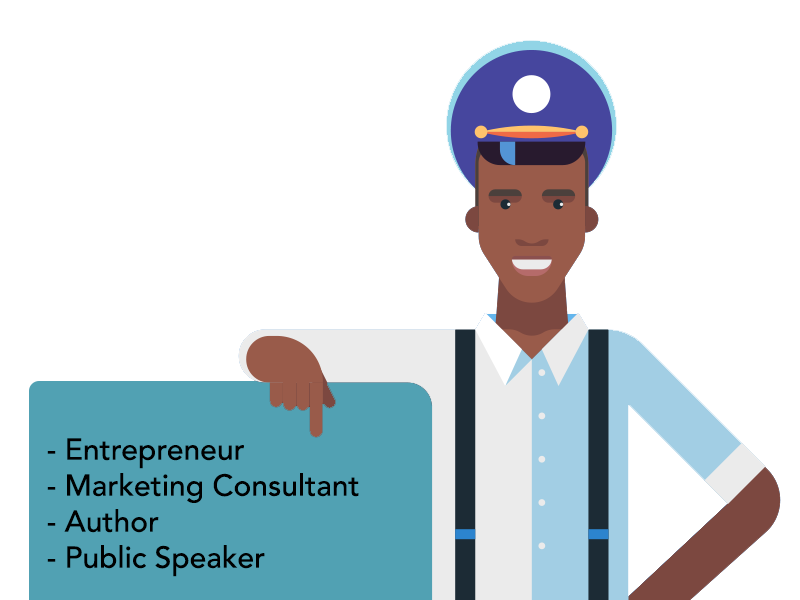
Ross works with other brands, but he also builds his own. As the founder of various companies, Ross has applied all of his B2B and content marketing knowledge to his own brands to build them into successes. He is the founder of Hustle & Grind, an eCommerce store specifically geared toward entrepreneurs, as well as other brands. Ross exemplifies the forward thinking content marketer that we, here at OCG, aim to bring onto our team. For more information on Ross Simmonds, you can visit his website and learn even more about what he's working on.
 Internet Marketing Background
Internet Marketing BackgroundWhen it comes to internet marketing, Scott Stratten is no amateur. He and his partner Alison have co-written five best selling business books and co-hosted over two-hundred podcasts. From music industry marketer, to national sales training manager, to professor, Scott finds himself at the forefront of marketing innovation. He now spends all of his time keynote speaking at conferences to engage audiences on how to succeed in business today; to get them thinking more and doing more about marketing.
Internet Marketer Scott Stratten focuses on helping businesses “unlearn” the traditional ways of marketing that cause them to fade to the back of customers’ minds. He helps businesses understand how to stay at the forefront, so that when your clients are ready, they choose you.
After watching Scott speak at the Unbounce CTA 2017 Conference in Vancouver, Canada, I became fascinated with his ideas for how to market authentically. He is not only funny, passionate, and inspiring, but also incredibly informative. Also, his expert insight and blunt advice have audiences rethinking their marketing strategies. Scott can’t stress enough the importance of engaging with clients and creating those loyal, lasting relationships so that they need you.
Each of Scott’s books has something different to offer the world of business, all providing tangible value. He always includes real-life examples, guidance, and strategies so that a business can begin applying new, effective strategies immediately.
Adding the prefix “Un” to key marketing terms, Scott encourages businesses to rethink the way they do things. Unbranding focus on branding from the core as opposed to covering up things that are broken with implementing a “quick-fix” strategy. Unselling has to do with creating those ties so that your customers become loyal, repeat customers.
In today’s ever-changing business climate, Scott reminds us that we need to remember what is important. Great products and great service are what ultimately make a great business. Scott’s passion for what he does inspires each of us here at OCG Creative to create something that truly matters. We want to create business that is “awesome,” as Scott would say.
Check out Scott and Alison’s website unmarking.com to learn more about how to start engaging.
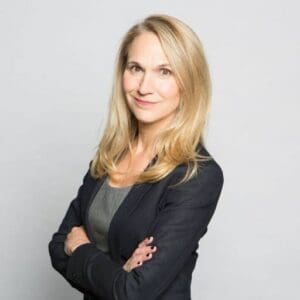 Internet Marketing Background
Internet Marketing BackgroundOver the years, I’ve noticed that very often the marketer have engineering or data science backgrounds. Mark Roberge is a quintessential example of an engineer that is also a brilliant Internet marketer. April Dunford is another.
Also an engineer by training, April Dunford makes top-level Internet marketing her career. She’s driven successful sales and marketing programs for startups like Tulip Retail and Watcom, as well as holding executive marketing positions at companies like IBM, Nortel and Siebel Systems.
April is focused on helping companies position their products in the marketplace. She uses the term “framing”, which she rightly points to as the key element in a product’s success or failure. You can find out about her workshops and speaking engagements by visiting www.rocketwatcher.com.
Prior to last June, I had seen her name on speaking rosters and the occasional marketing forum, but that’s about it. Then, a few of us attended the Unbounce CTA ’17 conference, where she was a speaker. It was a great conference, with mostly good speakers, a few great ones, and a couple duds. April was one of the great ones.
First, she’s great at holding an audience, but more importantly, she understands product positioning and the sales process incredibly well. You can find that Unbounce presentation here: https://calltoactionconference.unbounce.com/speakers/2017-april-dunford/
To me, her underlying lesson is never to be held captive by our own assumptions. She tells the story of a database product she was charged with getting into the market. It’s a tough sell in a crowded space, so success was challenging at best. Eventually, after countless frustrating presentations, one feature resonated with the executive she was pitching. That one feature turned out to be a game-changer that none of her competitors had.
The company pivoted and repositioned itself as the leader in that specific financial vertical. Previously, she described an overnight mental self-revelation that the product was “crap.” In fact, the product was gold, but had been positioned where it had little chance for success.
If you get a chance to see April Dunford speak, don’t pass it up. She is brilliant, funny and a total pro, and you’ll likely learn a few things you can use to make your own company at least a little more competitive.
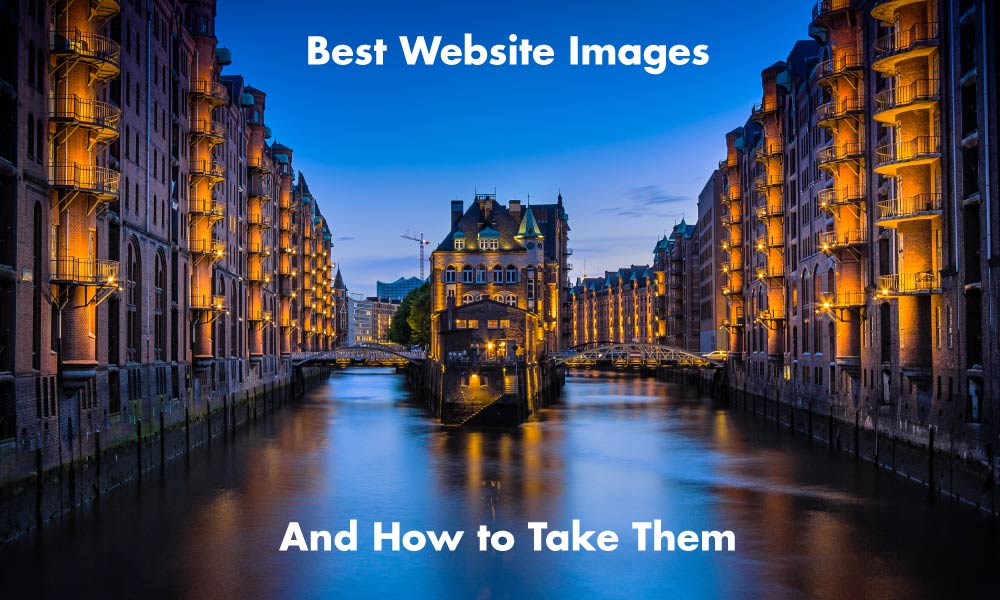
The best creative web design for clients all have one thing in common; image quality. Images are the number one visual way information is communicated and in the day and age of increasing demands for quick information, images do a great job at telling a story quickly for site visitors. Images are crucial for efficient web design because they break up content on pages which can be overwhelming for visitors. Essentially, people want information fast, and when they don’t get the answer to a search phrase, they leave the site (contributing to high bounce rates, low conversions, and lowered SEO scores). What better way to convey information quickly than through pertinent images paired with good keyword-heavy content aiming to match a visitor’s search phrase?
Efficient use of images can be hugely beneficial to a site and can add to a business’s branding, their tone toward visitors, their business’s image, efficiency in converting visitors, guiding efficient site-navigation, SEO, and much more. Images work hand in hand with creative web design and are increasingly recognized in their importance in conveying information:
“A common finding is an observed processing superiority of pictures as compared to words, suggesting that pictures have a faster and more direct access to meaning, while words are discussed to require additional translational activity...” -Schlochtermeier, et al. (2013).
Given the importance of images to visitors, it is good to know what constitutes as good images for a website to make the most of creative web design.
When people think of the best web design they typically only think of a site’s layout. However, most people forget that a large portion of layout is where to place high-quality images and content. The best web design is unique for each client and their business. However, there are similarities with site layouts and how images are arranged:
Simple and effective designs use layouts with images that do not confuse visitors, help them navigate the site, sell your unique message, and help convert visitors into a customers. Good layouts also use images to guide visitors toward pertinent pages or locations on their site.
There is a misconception that images need to be small for a website. Images need to be as big as possible to get high resolution, only their file sizes need to be small. Thankfully OCG takes care of all file compression so even if you give us massive photos, we ensure they are optimized on your website. Images that are too small are 'pixelated' or 'low-res' and look bad on websites and can hurt your online appearance and brand identity.

High Res Image

Low Res Image
The images need to be well lit. Avoid using a flash because it tends to wash out all images. The main source of lighting should not be behind the subject either and you should avoid highly contrasted images that add a lot of distracting patterns. This is very important because many images on a website have text over them and high-contrast images make it difficult to read the content and can be strenuous to look at on their own.

Good Lighting

Bad Lighting
Having everything in focus can make the image too cluttered and distract from what you really want to viewer to see in the image. A ‘soft-focus’ pulls the viewer’s eye toward the object you want site visitors to pay attention to while softly blurring the rest. This can also help de-clutter busy images.

Good Focus

Bad Focus
Many people think that if you want to draw attention to something it needs to be centered in the image. That can get repetitive with many images on your site. Take images from close up and far away with the subject in different places. It can be a mistake to take all of your images from one perspective using one composition, unless you are taking product shots.

Good Composition
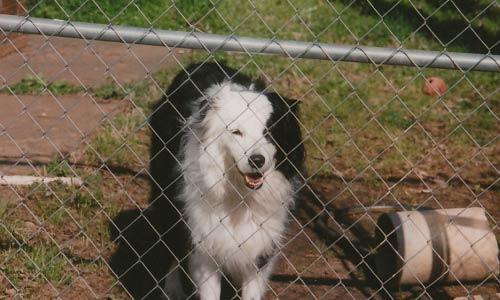
Bad Composition
You may hear web-designers or account-coordinators talking about ‘mastheads’. Mastheads, banners, or site headers are the images that display at the top of each web page. These images need to be large (to work with a responsive website) and need to be ‘landscape’ not ‘portrait’. Additionally, because visitors only see a tiny part of the whole image, it is a good idea for the image to capture 'depth’. For example, instead of taking images from a top-down angle on a subject, try taking shots from different angles that emphasize perspective. A good way to do this is taking a series of images starting from the ground-level and moving up.

Good Perspective

Bad Perspective
Many clients find sites and ask what we can do to make their site more like the example they choose. The most common site people tend to ask for is Apple or other sites for technology companies. So what do they do that makes their layout work so well?
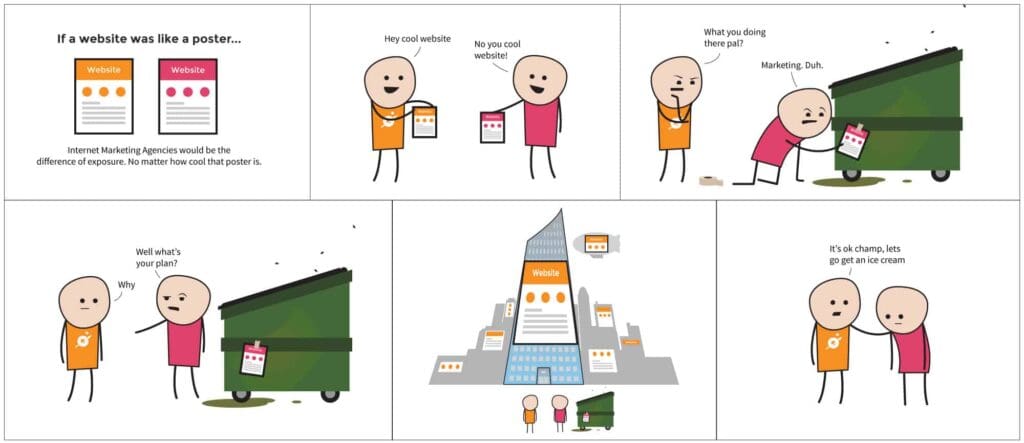
Creativity reigns supreme right? It is common knowledge that only the coolest websites get top exposure. Part of me, as a web designer, hopes this would be true. However, creative web design only takes a business so far. Ultimately, there are thousands of terribly designed websites that get more traffic than award-winners. If you want your website to work for you beyond a cocktail party talking point, then you need to know that Web Design is a part of Internet Marketing and not the same thing.
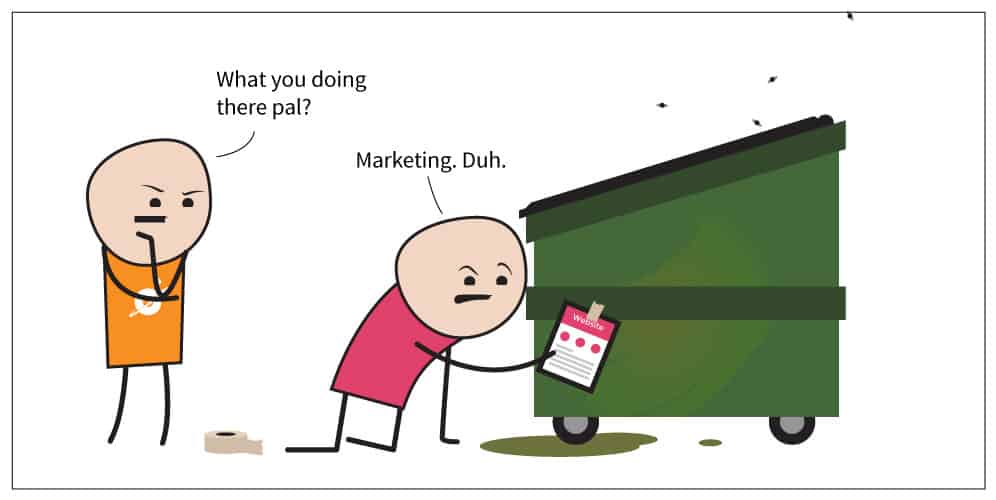
As cleverly explained by the cartoon, you can have the most creative and interesting website in the world, but if you market it horribly, then not many people will see it and you won’t get a very good return on your investment. OCG Creative’s team of dedicated and nerdy Reno web designers and developers work hard to produce these award winning sites. We have done this for numerous clients for many years. Part of the creative web design also involves the user’s experience with the website, which is why an analogy of a website being a poster is only part-true. In reality, a website is a fluid document – it changes with input from the user and looks different on different devices. OCG works to build the coolest website imaginable for our clients, but we know at the end of the day that it is essential to market it correctly, and websites should never stop when the design is completed.

As a secret confession, I used to wonder this question all the time. There are plenty of online tools to build a website, and before I became a web designer, I even built my own portfolio using one of these tools. The issue with all of them… they’re awful. Even discounting the fact that all of them stop at the end of web design, the web design itself is clunky, confusing, and very limiting. I didn’t realize this until I experienced it first hand. A website should never stop at the end of creative web design. Instead, it should be a rocket-powered branding piece pushing the client forward to more exposure and spurring the start of a comprehensive effort to convert website visits into leads. OCG custom designs each website so it is beautiful and branded, but most importantly, they are scalable and sturdy for expansion in traffic and tailored to convert site visitors into customers.
After website design is completed, many people stop and never touch it again. It’s similar to making a cool poster and then never posting it anywhere. Why? Internet marketing takes effort, DIY site builders don’t have the resources to market each site created and the sites themselves are cluttered and reject efforts to market them. A lot of this is due to lack of on-site SEO support in addition to other elements such as effective landing pages and lack of Conversion Rate Optimization. It is much easier to stop after finishing the web design part.
The point is, OCG Creative is a dedicated and experienced Reno web design and internet marketing agency that has the resources. Websites should be built to be optimized for internet marketing. The issue with DIY site builders, is the website's inability to integrate with a meaningful and comprehensive marketing campaign for individual clients. This is because DIY sites purposefully exclude any means of integrating with an internet marketing plan, it is simply too much effort for DIY site builders to accommodate these features. Internet marketing takes time and a sturdy website foundation specifically built for internet marketing. Additionally DIY site builders don't want to manage campaigns because they take time and constant tuning. Hard work with SEO, Landing Pages, CRO, and other services, take time to gain traction. OCG maintains these campaigns, constantly tailoring our client’s Internet Marketing plans to coincide with optimal conversions including tracking page visits and valued keywords to get them ranking higher. You can’t get that level of detailed attention with do-it-yourself websites. It takes significant time, specialized data collection, and informed decisions to be implemented after data collection to market a website correctly.
If you’re not sure where to go from here knowing all of this or if you still think an awesome looking website is the most important thing for you or your business, give us a call or browse our other topics. We’ve been doing this for a while and know the internet marketing world front and back.

Local search engine optimization, lovingly referred to as local SEO, is an integral part of any businesses local marketing initiatives. When a business has a great search engine optimization strategy, its search ranking can be expected to be higher. The higher a search rank, the greater propensity for potential customers to visit your website and ultimately purchase your product or service. (more…)
In marketing, there are few guarantees. We set goals, do our research, plan, weigh the opportunities and threats, then execute. Finally, at intervals or once the campaign has finalized, we evaluate the result make decisions about what to do next.
It is little known, but prior to 1900 and a little after, there was a Lake Tahoe resort on the North shore of Emerald Bay called, appropriately, the Emerald Bay Resort. Then, as now, Lake Tahoe was something of a vacation hotspot, despite having virtually every tree in the basin cut down and sent to the Virginia City silver mines. This is where the marketing/scuba diving similarities are uncanny. When the Emerald Bay Resort was in its heyday, they'd offer rowing skiffs and similar watercraft to guests, which they would use to ply the waters of the lake under human power. Although the resort is long gone, these little vessels, known to some as Emerald Bay's "miniature fleet" had been scuttled and remain on the bottom. For small craft enthusiasts, the miniature fleet is like a liquid time capsule--a submerged museum of the evolution of boat building. On Sunday, our mission was to find it.
Like finding a bunch of tiny boats, effective marketing begins with research. Imagine (and, who wouldn't) the boats are your potential customers. As a marketer, your goal is to deliver your message to the boats, er... customers. BUT, before you can deliver your message, you must know where to find them. Your marketing dollars are like air (or, in our case, Nitrox, but that's not important). It's a big lake, so if we were to have any hope of finding the miniature fleet, we couldn't just jump in and start swimming. And, unless you have unlimited time and money (who doesn't?), the last thing you want to do is blow your budget not knowing whether your target market is anywhere in the vicinity. We read books, asked people in the area and dug through everything we could find on the Internet (BTW, I think this "Internet" thing might really catch on). Eventually, we narrowed our search by comparing old photos of the resort to the surface geology (rocks... big ones) of today. I'm no expert on geologic time, but how much could a 50,000 pound boulder erode in a hundred years? Thus armed, we chose our drop in point, geared up and rolled over the side of our trusty research vessel (aka. Joe's boat). After about 25 minutes in the water, we hit our mark by identifying a lapstrake rowing skiff dating back to the late 1800's. Our research payed off and we had the opportunity to visit a unique piece of history because we narrowed our search without wasting our precious breathing gas.
Your budget is your budget. Too often, the approach to marketing (especially media advertising), is to decide and commit, skipping the research part altogether. In fact, the system is kind of set up that way. Our job is to make sure that you deliver the right message to your boats while you still have air left.
And there you go. Diving and marketing. Peas in a pod. PB & J. Different, but so eerily complimentary, that I believe it's high time we thought about having meetings underwater.
Speaking of scuba diving and marketing, OCG Creative is a Reno web design and internet marketing agency that provides marketing services for a variety of industries such as the scuba diving industry. Take a look at some of the work we have done for clients such as Adventure Scuba.